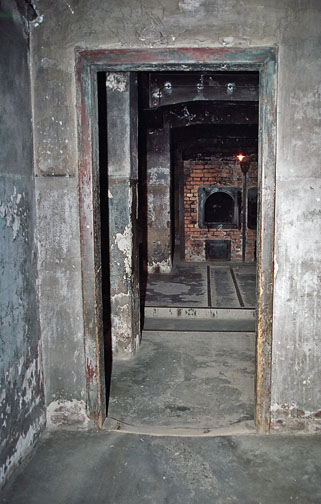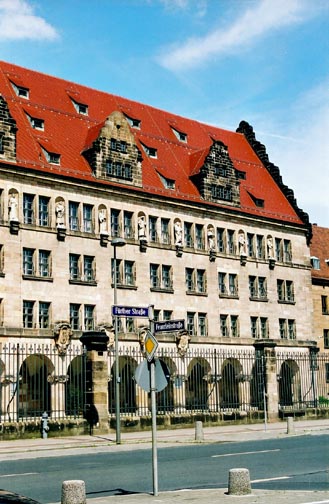I wrote a previous blog post about the Rev. Martin Niemöller and his famous saying which goes like this, as quoted in the news article:
“First they came for the Socialists, and I did not speak out — Because I was not a Socialist. Then they came for the Trade Unionists, and I did not speak out — Because I was not a Trade Unionist. Then they came for the Jews, and I did not speak out — Because I was not a Jew. Then they came for me — and there was no one left to speak for me.”
The following quote is from the news article written by Marc A. Thiessen:
Begin quote:
Donald Trump speaks to supporters at a Nov. 28 campaign rally in Sarasota, Fla. (Steve Nesius/Associated Press)
By Marc A. Thiessen November 30 at 11:17 AM
Remember how Hillary Clinton compared her GOP opponents to the Nazis, declaring that Republicans wanted to “go and literally pull [illegal immigrants] out of their homes and their workplaces” and “round them up” and put them in “boxcars”? Her comment was outrageous, but it was par for the course. After all, Clinton had earlier compared GOP presidential candidates to terrorists .
It’s terrible for a Democrat to compare Republicans to the Nazis. But for a sitting GOP governor seeking his party’s nomination to do it is beyond the pale.
Yet that is precisely what John Kasich has done in a new Web ad attacking Donald Trump. The Kasich ad (ironically titled “Trump’s Dangerous Rhetoric”) declares: “You might not care if Donald Trump says Muslims must register with their government because you’re not one. And you might not care if Donald Trump says he’s going to round up all the Hispanic immigrants, because you’re not one. And you might not care if Donald Trump says it’s okay to rough up black protesters, because you’re not one. And you might not care if Donald Trump wants to suppress journalists, because you’re not one. But think about this: If he keeps going, and he actually becomes president, he might just get around to you. And you better hope there’s someone left to help you.”
If that language sounds familiar, it is intentionally paraphrasing German Lutheran pastor Martin Niemöller’s famous poem following World War II: “First they came for the Socialists, and I did not speak out — Because I was not a Socialist. Then they came for the Trade Unionists, and I did not speak out — Because I was not a Trade Unionist. Then they came for the Jews, and I did not speak out — Because I was not a Jew. Then they came for me — and there was no one left to speak for me.”
Keep in mind that Niemöller — a survivor of the Dachau concentration camp — was talking about the German people’s responsibility for the Holocaust. When Niemöller said “they came for the Jews,” he meant to take them to the gas chamber. As the United States Holocaust Memorial Museum explains on its Web site, “his point was that Germans . . . had been complicit through their silence in the Nazi imprisonment, persecution, and murder of millions of people.”
John Kasich ‘Trump’s Dangerous Rhetoric’ | Campaign 2016
The presidential campaign for Gov. John Kasich (R-Ohio) put out a new ad lashing out directly at fellow Republican candidate Donald Trump with a harsher tone than any other candidate has taken thus far. (John Kasich)
And Kasich thought it was appropriate to use that analogy to describe Donald Trump?
Kasich’s ad is not only offensive, it is misleading. It states Trump is going to “round up all the Hispanic immigrants.” No, he isn’t. Trump says he’s going to deport illegal immigrants. You may agree or disagree with what Trump proposes, but there’s a big difference between deporting people who are here illegally and “rounding up” everyone of a particular ethnicity. And let’s not forget: Trump says he’s going to let them all back in. As Trump put it in an interview , “I would get people out and then have an expedited way of getting them back into the country so they can be legal. . . . A lot of these people are helping us . . . I want to move ’em out, and we’re going to move ’em back in and let them be legal.”
That’s hardly the Final Solution.
The Kasich ad also falsely declared that Trump wants to “suppress journalists” while showing video of his security guards removing Univision anchor Jorge Ramos from a press conference. Ramos was removed for disrupting the press conference, and Trump later invited him back and answered his questions once he agreed to wait his turn to speak. That hardly counts as “suppression.”
The ad also backfires. It is intended to highlight the troubling things that Trump has been saying, but it is so over the top, so outrageous, that even people who might not particularly support Trump will recoil from it. Trump should be called out for his recent comment that a Black Lives Matter protester who disrupted one of his events “should have been roughed up.’ In the United States, no one deserves to get “roughed up” for exercising their First Amendment Rights. And his answer when asked by a reporter if we should keep a “database” of Muslims in America — “I would certainly implement that, absolutely” — was repulsive.
Yet when Kasich compares Trump to Hitler — and uses misleading statements to do so — what Trump says is overshadowed. Kasich calls Trump “divisive and insulting,” yet he manages to be even more divisive and more insulting than Trump himself. That’s quite an achievement.
Kasich’s ad achieves a political trifecta: It is offensive, inaccurate and ineffective. Here’s a little advice for Kasich, Hillary Clinton and any other candidate who wants to follow them down into the fever swamp of Nazi analogies: Don’t.
End quote
My photo below shows the protestant church at Dachau.

My photo of the Protestant Church at Dachau
The Church, which is shown in the photo above, was dedicated on April 30, 1967 at a ceremony at which a speech was made by the Rev. Martin Niemöller, one of the most famous prisoners in the Dachau camp.
In his capacity as the leader of Germany, Hitler had issued an order that German Jewish converts to the Christian faith were forbidden to be ordained as priests or ministers.
Hitler had united all Protestant denominations into one church with himself as the head of the Church.
The Rev. Niemöller was one of the founders of the Confessional Church which defied Hitler’s orders. He was put on trial and convicted of treason.
After being sentenced to time served while he was awaiting trial, the Rev. Niemöller was sent first to the Sachsenhausen concentration camp and later to Dachau because he continued to defy Hitler’s orders.
The Church of Reconciliation, which is shown in the photo above, was designed by Helmut Striffler, a German architect from Mannheim, after he won a competition among seven architects for the best proposed plan.
According to Striffler, his design is intended to make a statement against the Nazi obsession with order and tradition. Striffler specified that his church should be surrounded by gravel and built of unfinished concrete. In other words, he designed an ugly church which was the exact opposite of what Hitler admired.

Another view of the modern church at Dachau






















